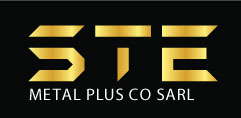
Diamond Trading
Diamond Trading refers to the buying and selling of diamonds in the global market. The diamond trade is a significant industry, with various players, including miners, wholesalers, retailers, and investors. Here’s an overview of the key aspects and considerations involved in diamond trading:
- Diamond Sources:
- Diamonds are primarily sourced from diamond mines located in various countries, with major producers including Russia, Botswana, Canada, and Australia. Artisanal and small-scale mining also plays a role in diamond supply.
- Diamond Grading and Certification:
- Before trading diamonds, it’s essential to understand diamond grading and certification. Diamonds are evaluated based on the “Four Cs”: Carat weight, Cut, Color, and Clarity. Professional gemologists grade diamonds and issue certificates that provide details about these characteristics.
- Market Research:
- Conduct market research to understand global and regional trends in diamond demand and pricing. Familiarize yourself with the target market’s preferences, including consumer preferences for diamond jewelry.
- Diamond Exchange:
- Some cities have specialized diamond exchanges, such as the Diamond District in New York City or the Diamond Bourse in Mumbai. These are places where diamond traders and dealers congregate to buy and sell diamonds.
- Supply Chain:
- Diamonds typically pass through several stages in the supply chain, including mining, sorting, cutting and polishing, wholesaling, and retailing. Traders can be involved in any of these stages.
- Ethical and Responsible Sourcing:
- Consider ethical and responsible sourcing practices to ensure that the diamonds you trade do not come from conflict zones or contribute to human rights abuses. The Kimberley Process Certification Scheme is an international initiative aimed at preventing the trade of conflict diamonds.
- Storage and Security:
- Diamonds are valuable, portable, and easy to transport. Therefore, ensure secure storage and transportation when dealing with valuable diamond inventory.
- Pricing and Valuation:
- Diamond prices can vary widely based on various factors, including size, quality, and market demand. Stay informed about current diamond prices and valuation methods.
- Sales Channels:
- Decide on your sales channels. You can sell diamonds to retailers, jewelry manufacturers, wholesalers, or even directly to consumers if you have the necessary infrastructure.
- Certification and Documentation:
- Maintain proper documentation for your diamonds, including certificates, invoices, and records of transactions. Accurate documentation is vital for transparency and traceability.
- Legal Compliance:
- Comply with all local and international laws and regulations governing the trade of diamonds. Familiarize yourself with the Kimberley Process and other relevant regulations in your country.
- Liquidity and Risk Management:
- Be prepared for fluctuations in diamond prices and manage risks associated with market volatility. Consider liquidity needs in your trading strategy.
- Customer Relationships:
- Build and maintain relationships with reliable suppliers and customers. Trust is crucial in the diamond trade.
- Market Trends:
- Stay updated on industry trends and innovations, such as lab-grown diamonds and new cutting and polishing technologies.
Diamond trading can be a lucrative business, but it requires in-depth knowledge of the industry, access to reliable sources, adherence to ethical and legal standards, and a commitment to maintaining the highest quality standards. Additionally, networking within the industry and building a reputation for integrity and transparency can be essential for long-term success in the diamond trade.
